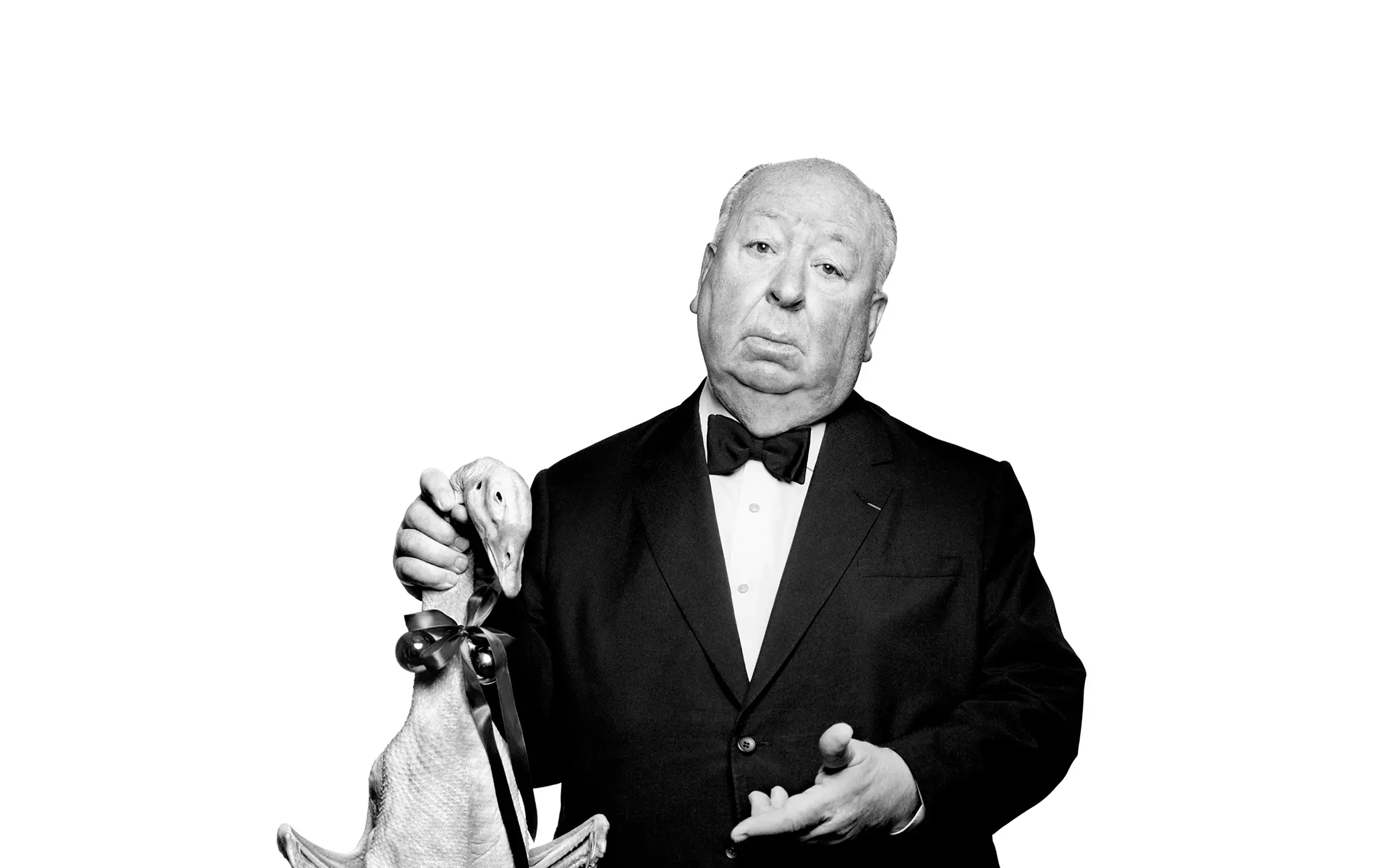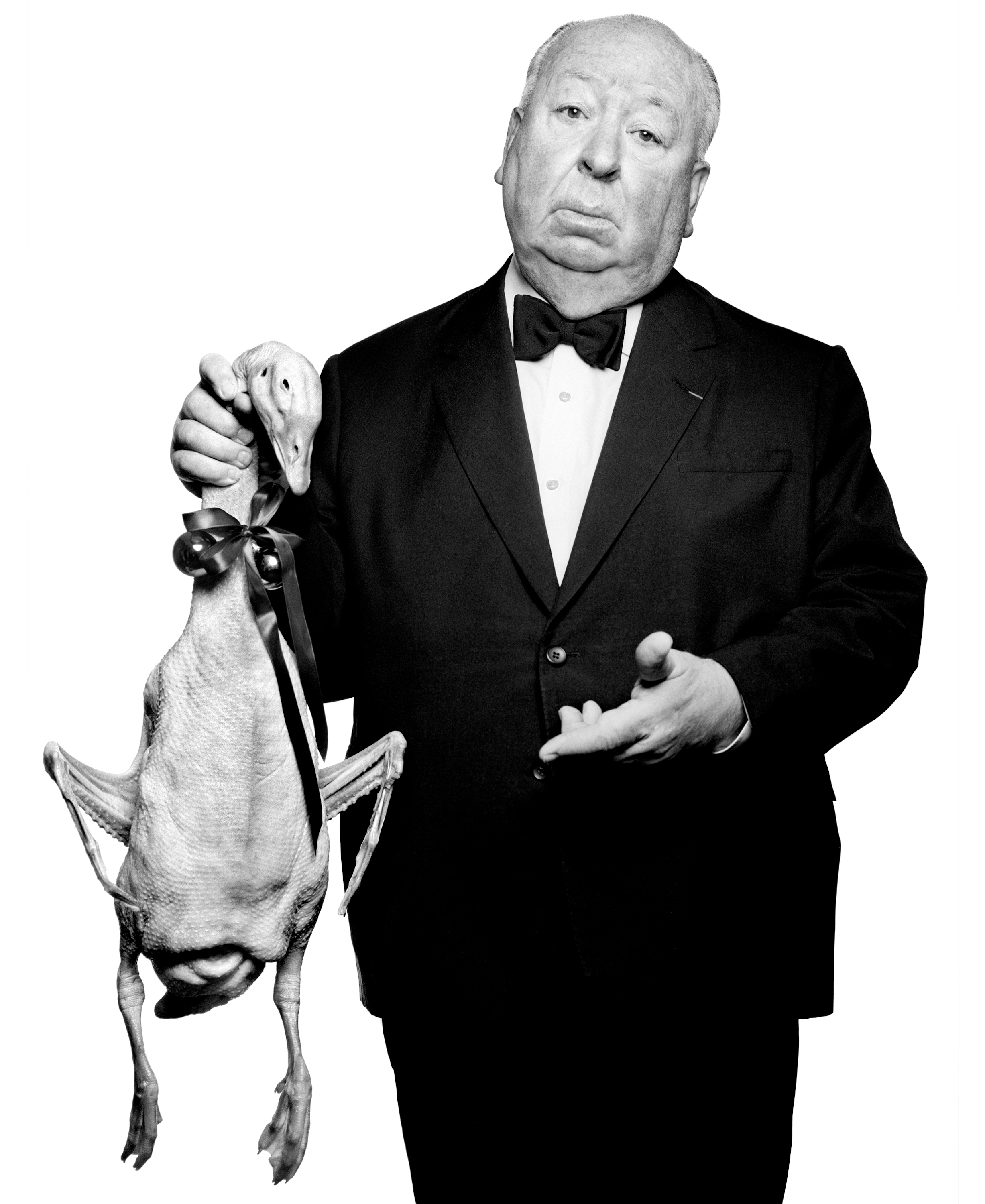La historia detrás de la imagen de Alfred Hitchcock
Escrito por: Clare Gillsäter

Albert Watson es el maestro que inspira a los artistas a querer progresar y mejorar. Esta imagen de Alfred Hitchcock tomada en 1973 fue un punto de inflexión en su carrera profesional. De hecho, como dice Albert: “Es la foto más importante que he hecho, ya que me ayudó a ganar confianza”.
Carpe diem
Cuando Harper’s Bazaar llamó a Albert para que fotografiara a Alfred Hitchcock, no se lo pensó dos veces. “Si tienes la oportunidad de hacer una foto como esa, debes estar a la altura y hacerlo lo mejor que puedas”. Era la primera vez que trabajaba con alguien famoso. Gracias a unos meticulosos preparativos, pudo tranquilizarse para “estar preparado y ser eficiente”, así como para poder “concentrarse al comunicarse con él. Era muy importante”.
Hasta hoy, Albert prepara meticulosamente sus sesiones fotográficas, como pudimos ver cuando creó las emblemáticas imágenes de Sergei Polunin. En este caso, vio las películas de Hitchcock y utilizó el argumento de un thriller psicológico como inspiración. La revista quería que el artículo girara en torno a la receta de ganso de Navidad de Alfred Hitchcock y que mostrara su gran talento como cocinero. El joven fotógrafo se la jugó y sugirió algo audaz: Hitchcock debería sujetar un ganso muerto por el cuello como si lo acabara de estrangular. Su extravagante propuesta estimuló la imaginación de Hitchcock y ese cambió dio lugar a una fotografía impactante.
La iluminación: menos es más
Albert Watson se estaba labrando un nombre como fotógrafo a principios de los setenta. Sin embargo, ya conocía la importancia de la luz a la hora de crear texturas y estados de ánimo. Sabía que la iluminación es sólo una parte del trabajo del fotógrafo. Como sucede con gran parte de su obra, esta imagen de Alfred Hitchcock está iluminada de una forma sencilla. Esto podría deberse a los pocos conocimientos sobre iluminación que poseía por aquel entonces y al equipo del que disponía. No obstante, con el paso del tiempo, la iluminación sencilla y el concepto de "menos es más" se han convertido en el estilo propio de su fotografía. Ya desde el principio de su carrera profesional, Albert iluminaba sus imágenes de forma instintiva.
Eligió un fondo blanco para que contrastase con el traje negro de Hitchcock y combinó un flash con un paraguas con otro flash para iluminar el fondo. El equipo era sencillo: solo tenía dos luces. Pero le sacó partido y obtuvo un buen resultado con esas herramientas, en lugar usar técnicas complicadas. Descubrió una luz limpia que modelaba la imagen.
Inspiración y perspectiva
Albert estuvo a la altura. Calmó sus nervios y los canalizó para encontrar la inspiración y el valor. Para él, la inspiración es muy importante en todo lo que hace, ya que le estimula y le obliga a generar ideas distintas y a ver las cosas de otra manera. Ya sea arte, música, cine u otros trabajos, “La inspiración es como el viento para las velas de un barco. Ayuda a avanzar y puede darte una perspectiva diferente”.
De novato a genio
Albert ha dejado atrás aquella época en la que aceptaba cualquier trabajo que le ofrecían y ahora se ha convertido en un artista muy solicitado. Ya no intenta “evitar que sucedan cosas inesperadas”, sino que transforma lo inesperado en genialidad.
Ha aprendido mucho por el camino y no le importa compartir sus conocimientos:
- Conecta con las personas: ser amable es la mejor arma de un fotógrafo y puede hacer que una foto buena se convierta en una foto espectacular.
- Usa una iluminación sencilla: experimenta con la luz. Empieza de forma sencilla y, después, manipúlala para modelar la imagen.
- Busca siempre inspiración e ideas.
- Prepárate bien e investiga.
- Conceptualiza tu fotografía. Es decir, visualiza tus ideas.
- Y practica. Esto no es ningún secreto. Para hacer algo bien, hay que practicar. Y mucho.
